The recipe cost breakdowns are a big part of Budget Bytes. And while you’re not likely to have the exact same food costs as me (prices vary quite a bit from location to location, day to day, and even store to store), I think it’s helpful to see how each ingredient can impact the overall cost of a recipe. So now I’d like to dive a little deeper to show you how I make these calculations, and teach you how to calculate recipe costs yourself. Because even if you do it once, I promise you’ll learn a lot!
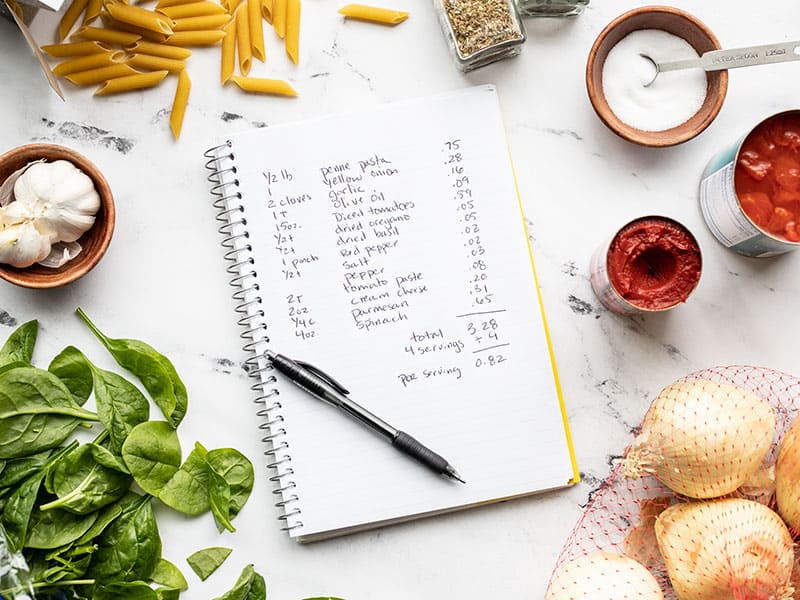
Why Calculate Recipe Costs?
My big “Ah-ha!” moment came when I calculated the cost of my first few recipes. I was always very mindful of the total amount I spent at the grocery store every week, but seeing the breakdown of each ingredient and the total recipe cost that truly revolutionized my way of cooking.
Seeing this breakdown helped me learn how to tweak recipes to make them more filling for less money, while maintaining maximum flavor. I learned that scaling back just a little on the most expensive ingredients (nuts, cheese, meat, etc.) dramatically reduced recipe costs, but didn’t have a huge impact on flavor. Likewise, I learned which inexpensive ingredients helped give my food a big flavor kick for pennies (green onions, cilantro, freshly cracked pepper, dried herbs, etc.), and which ingredients I could use to bulk up a recipe without greatly increasing the total cost (rice, pasta, beans, lentils, cabbage, carrots, potatoes, etc.).
What Method Do You Use?
Here on Budget Bytes I use the same method of calculating recipe costs used by commercial food service operations—adding the costs of each ingredient used, in the amount used, rather than adding the full price of items purchased. Some argue that you can’t just buy 2 Tbsp of olive oil, so the recipe actually costs more to make. The counter argument to that is that you don’t buy an entire bottle of olive oil every time you make a recipe, nor do I consider an ingredient “free” if I already have it in my kitchen and didn’t need to buy it for that recipe. Both methods have their caveats, but I find the method used here to be the most representative of the recipe’s true cost.
What Do I Need to Calculate the Cost of a Recipe?
The process is simple and doesn’t require a lot of time or “equipment.” It’s so simple, in fact, that I do this, by hand, for every single recipe on this website (well over 1000 recipe at this point). To calculate recipe costs you’ll need:
- Your receipts
- Original ingredient packages
- Pen and paper
- Calculator
- Grocery store website (as a backup for sourcing prices)
How To Calculate Recipe Costs – Step by Step Tutorial
Okay, so let’s walk through, step by step, what I do to calculate the cost of a recipe on Budget Bytes. For this tutorial, we’ll be using the Creamy Tomato and Spinach Pasta recipe as an example.
Step 1: Write down the recipe ingredients and quantities
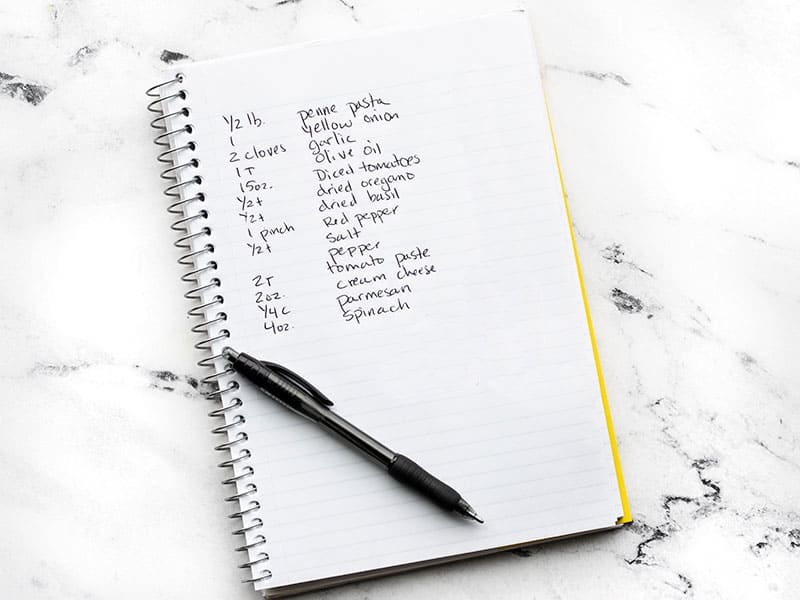
This post contains some affiliate links, which means that we make a small commission off items you purchase at no additional cost to you.
If you like to print your recipes, you can do the calculations right on the printed version of the recipe. I always do my calculations in my recipe development notebook. You’ll fill out the prices in the right hand column as you do the calculations.
Step 2: Fill in prices for ingredients that were used “whole”.
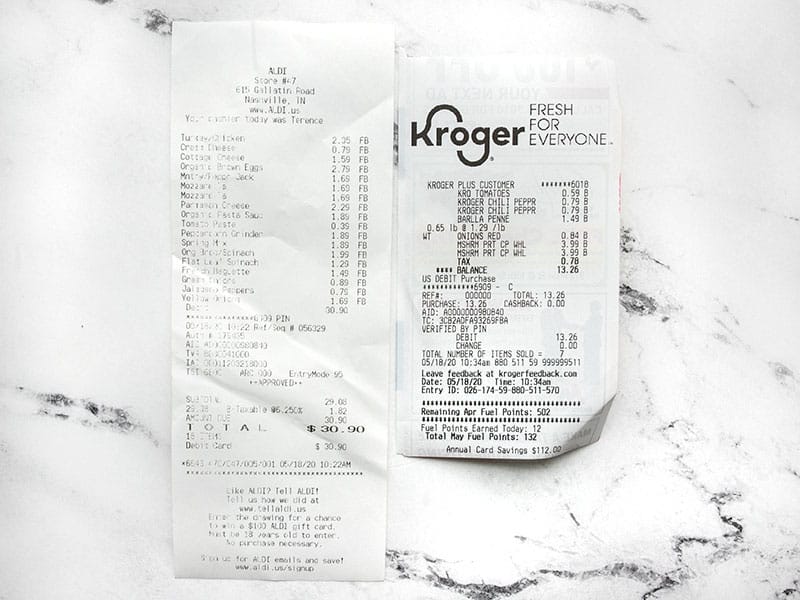
Gather your receipts and record the prices for any ingredient that you used in the “whole” form. This could be ingredients like a can of tomatoes, a cucumber, maybe a jar of pasta sauce, a single bell pepper, etc. In this Creamy Tomato and Spinach Pasta there was only one ingredient that I used in the full volume purchased—diced tomatoes. You can see this item listed as “kro tomatoes $0.59” on the Kroger receipt. Record the price next to this item on your recipe ingredient list.
Note: If you don’t have your receipts, check your grocery store’s website. Some larger stores, like Kroger, allow you to look up items online and the price will be displayed.
Step 3: Calculate Bulk Produce Items
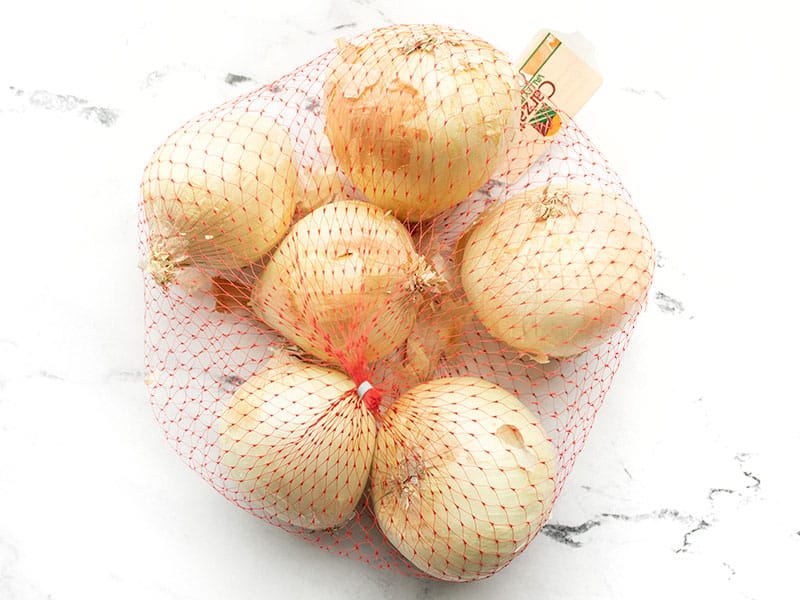
For bulk produce items, take the total price listed on the receipt and divide by the number of items purchase. The total price for this bag of yellow onions listed on the receipt was $1.69 and there are six onions in the bag, so each onion is approximately $0.28. Record this price on your recipe ingredient list.
This method works good for other bagged produce, like apples, carrots, oranges, lemons, potatoes, etc. and also things like packages of chicken thighs or breasts.
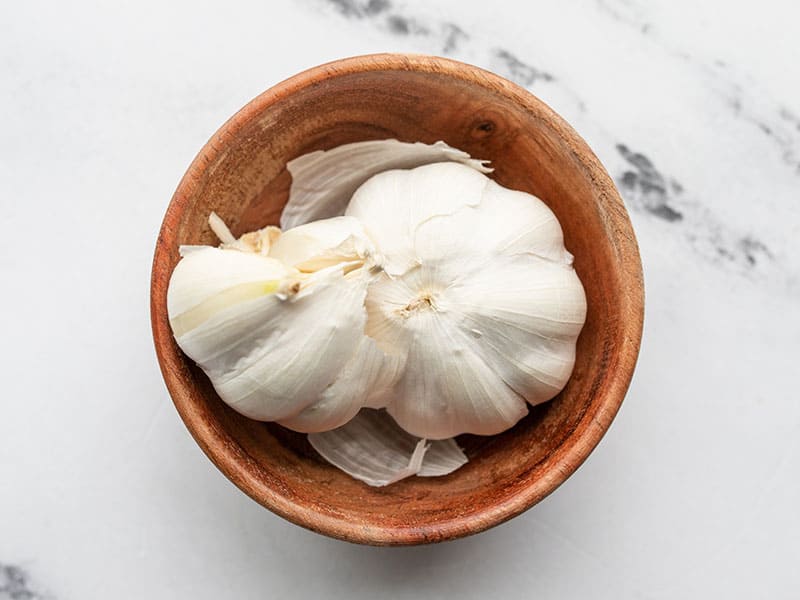
For garlic, each head is usually around $0.60-$0.65 and I get on average about 8 good sized cloves from each head, so I just estimate about $0.08 per clove.
Step 4: Use Package Labels to Calculate Partial Ingredient Costs
For most ingredients you’ll need to use the information listed on the ingredient packages to determine the cost of the amount used in the recipe. Here are some examples:
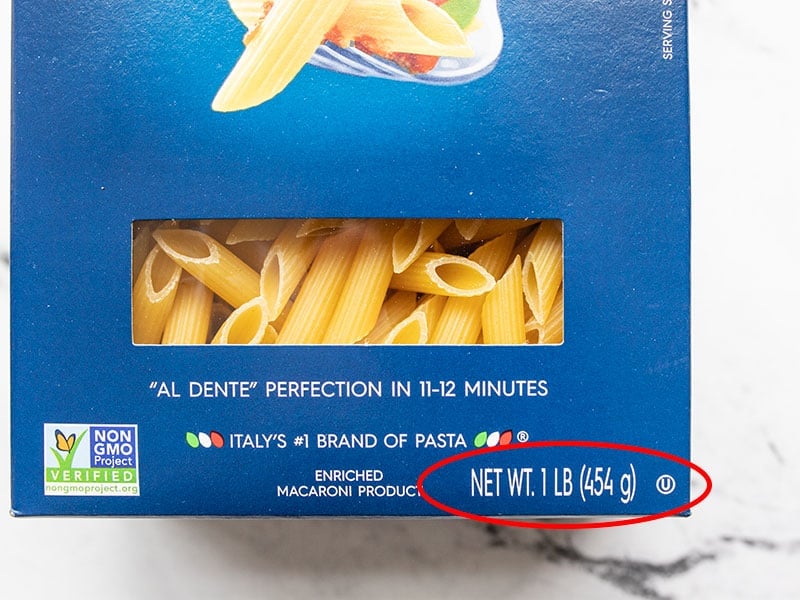
This recipe used 1/2 lb. of penne pasta. The whole box (1 lb.) cost $1.49. Since I used half the box, the cost of the amount used is $1.49 ÷ 2 = $0.75.
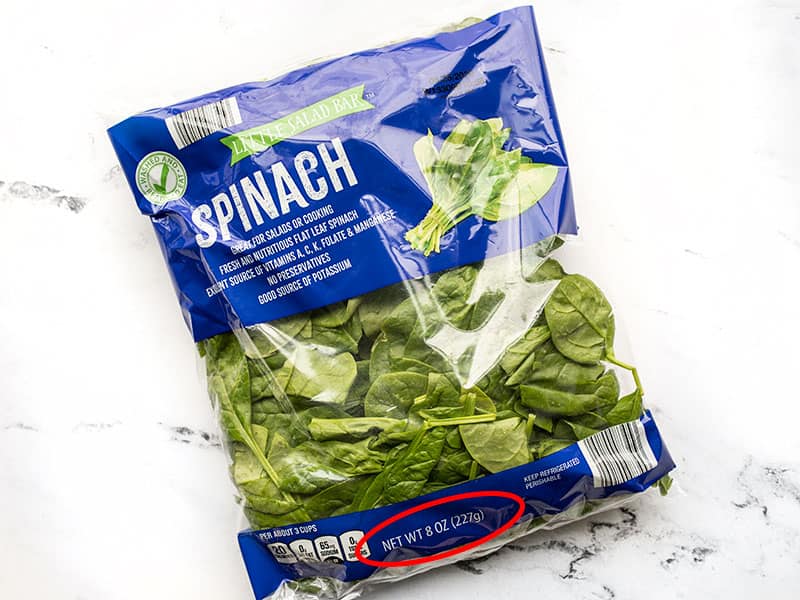
The same method was used for this bag of spinach. The full 8 oz. bag cost $1.29, so the cost of the 4 oz. used is $1.29 ÷ 2 = $0.65.
Sometimes the manufacturers are nice and provide helpful guides for measuring. This full 8 oz. package of cream cheese cost $0.79, so the cost of the 2 oz. used in the recipe is $0.79 ÷ 4 = $0.20.
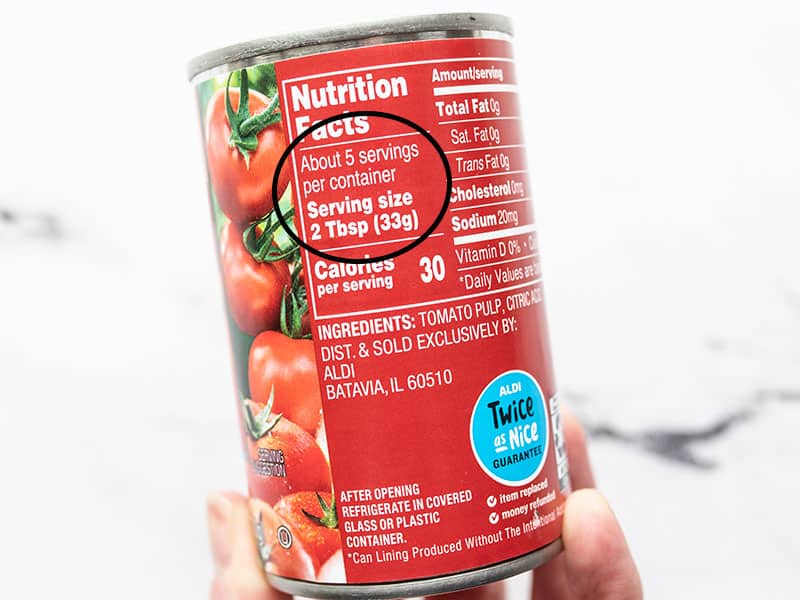
Sometimes the calculations can get a little more involved. The cost of this 6 oz. can of tomato paste was $0.39. We can see on the nutrition label that there are 5 servings of 2 Tbsp in the can, or a total of 10 Tbsp per can. We used 2 Tbsp for the recipe, so the cost of what we used is $0.39 ÷ 5 = $0.08.
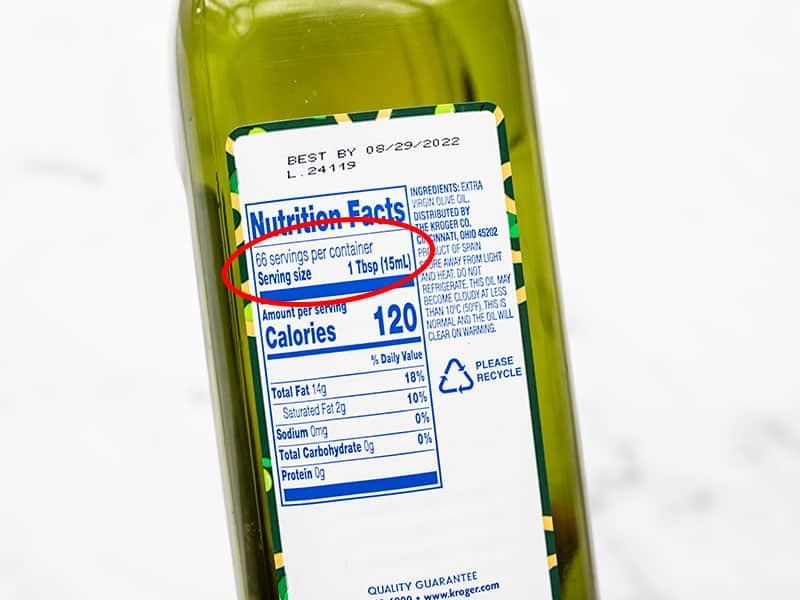
I bought this bottle of olive oil a while back, so I had to refer to Kroger.com to get the price. The total price for this bottle was $5.95. We can see on the nutrition label that there are 66 servings of 1 Tbsp in the whole bottle. We used 1 Tbsp for the recipe, so the cost of what we used is $5.95 ÷ 66 = $0.09.
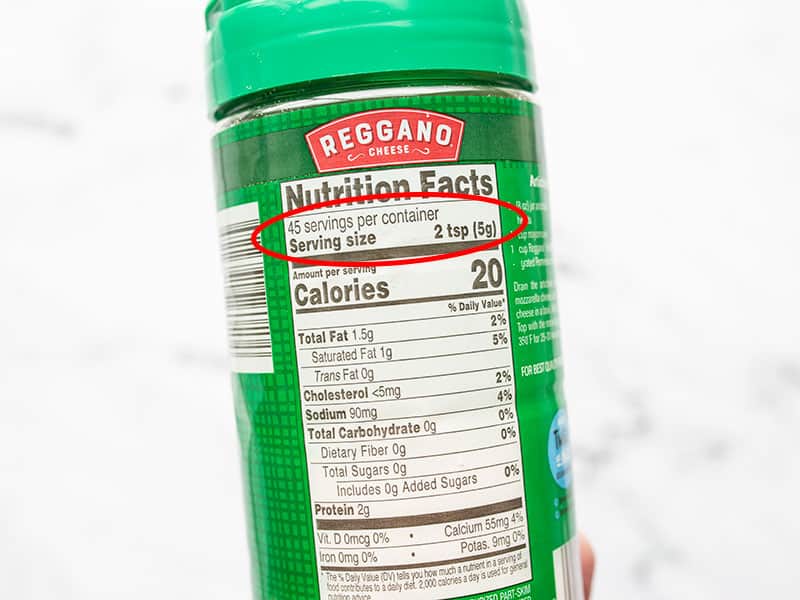
This Parmesan cheese is about as complicated as the calculations usually get because we’re converting between unit types. We see on the label that there are 45 servings of 2 tsp in the whole bottle. We used 1/4 cup in the recipe. So first I calculated the cost per tsp: $2.29 (total bottle price) ÷ 45 ÷ 2 = $0.025 per tsp. I know there are 3 tsp per tablespoon, and 4 tablespoons per 1/4 cup, so I calculated a little further: $0.025 x 3 x 4 = $0.31 per ¼ cup.
Step 5: Estimate Costs for Herbs and Spices
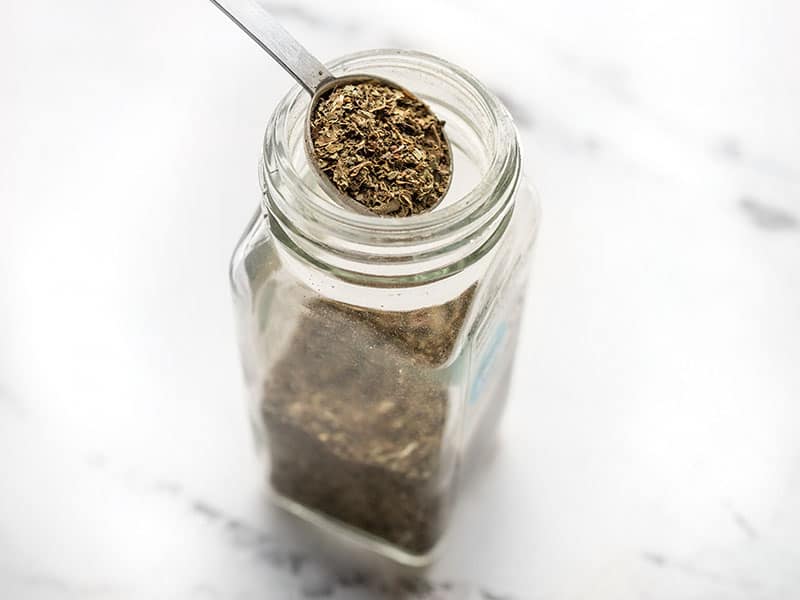
Herbs and spices don’t have nutrition labels with serving sizes to work with, and often the entire container only weighs less than 2 oz. Unfortunately I don’t have a kitchen scale that is sensitive enough to weigh something as light as a 1/2 tsp of a dry herb. So, for my purposes I use a generic (and generous) allotment of $0.10 per tsp for most dried herbs and spices. For salt and pepper I estimate a little less and for any rare herbs or spices I double the generic estimation. So, for this recipe: 1/2 tsp dried basil = $0.05, 1/2 tsp dried oregano = $0.05, 1 pinch crushed red pepper = $0.02, 1/2 tsp salt = $0.02, freshly cracked pepper = $0.03
Step 4: Add it all together!
So finally, we have all of the prices of the ingredients filled in on the recipe ingredient list. Now just simply add them all together and then divide by the number of servings and you’ve got the price per serving. So for this recipe, the total cost was $3.28 and with four servings that’s $3.28 ÷ 4 = $0.82 per serving.
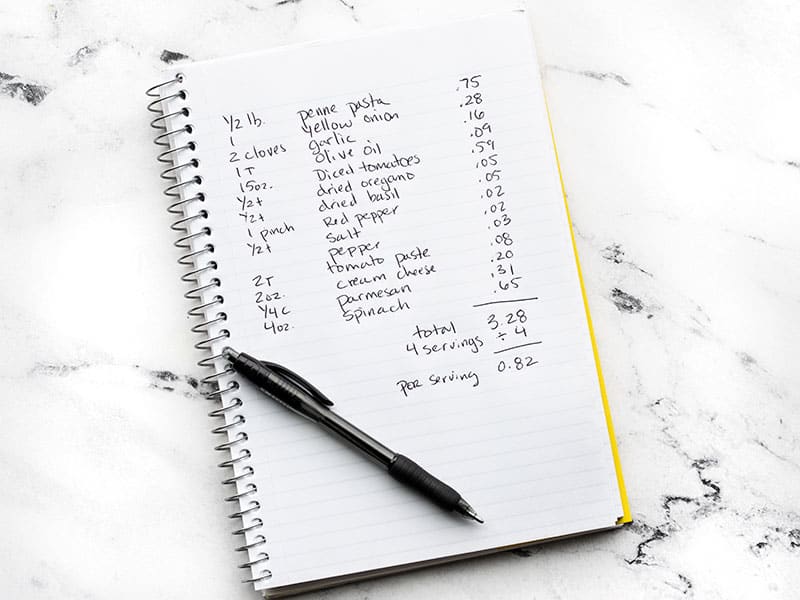
As you can see, it’s not an exact science, but it will definitely shed some light on where your money is really going. I hope you try it out at least once just to see how it goes. If you want to do it on a regular basis, you can start a spreadsheet with price per unit information for your pantry staples. This way you’ll have a record of the price for items that you may only buy a few times per year (and probably won’t have the receipt handy). Luckily, my blog acts as a “record” of these prices, so I can quickly refer back to my last purchase price.
What About Electricity, Gas, and Water?
Every now and then I get a question about how utilities add to my recipe costs. Unfortunately I don’t have a way to measure the amount and cost of the most of the utilities used in the recipes, but I’m confident that it would be a very small amount. For instance, in this recipe I used 1/2 cup water in the sauce. After checking my last water bill, I paid $0.003 per gallon of water. I round to the nearest cent for these calculations, so the cost of the 1/2 cup water in this recipe is negligible. Water is easy to measure, but I don’t think I could measure the amount of gas or electricity used to heat the oven.
Handy Conversions for Calculating:
- 3 tsp = 1 Tbsp
- 4 Tbsp = 1/4 cup
- 2 Tbsp = 1 fluid ounce
- 16 Tbsp = 1 cup
- 2 fluid ounces = 1/4 cup
- 8 fluid ounces = 1 cup
- 16 weight ounces = 1 pound
NOTE: “fluid ounces” are a volume unit, weight ounces are a measurement of mass. Solid ingredients are usually listed as weight ounces, liquid ingredients are usually listed in fluid ounces. 8 fluid ounces of one ingredient may not equal 8 weight ounces of that same ingredient. That will depend on the individual density of the ingredient. Cheese is a great example. 4 oz. (weight) of cheese is equal to about one cup (volume) of shredded cheese. One cup is 8 fluid ounces in volume, but only 4 weight ounces of shredded cheese.
Try It Yourself!
I hope I didn’t scare you off with all these calculations! It really is quite simple, especially after you do it a few times. If you’re interested in giving it a shot, start with a simple recipe that only has 3-5 ingredients and see how you do! Then, let me know how it worked out in the comments below. :)
P.S. Did you know you can browse our recipes by Cost per Recipe and Cost per Serving?


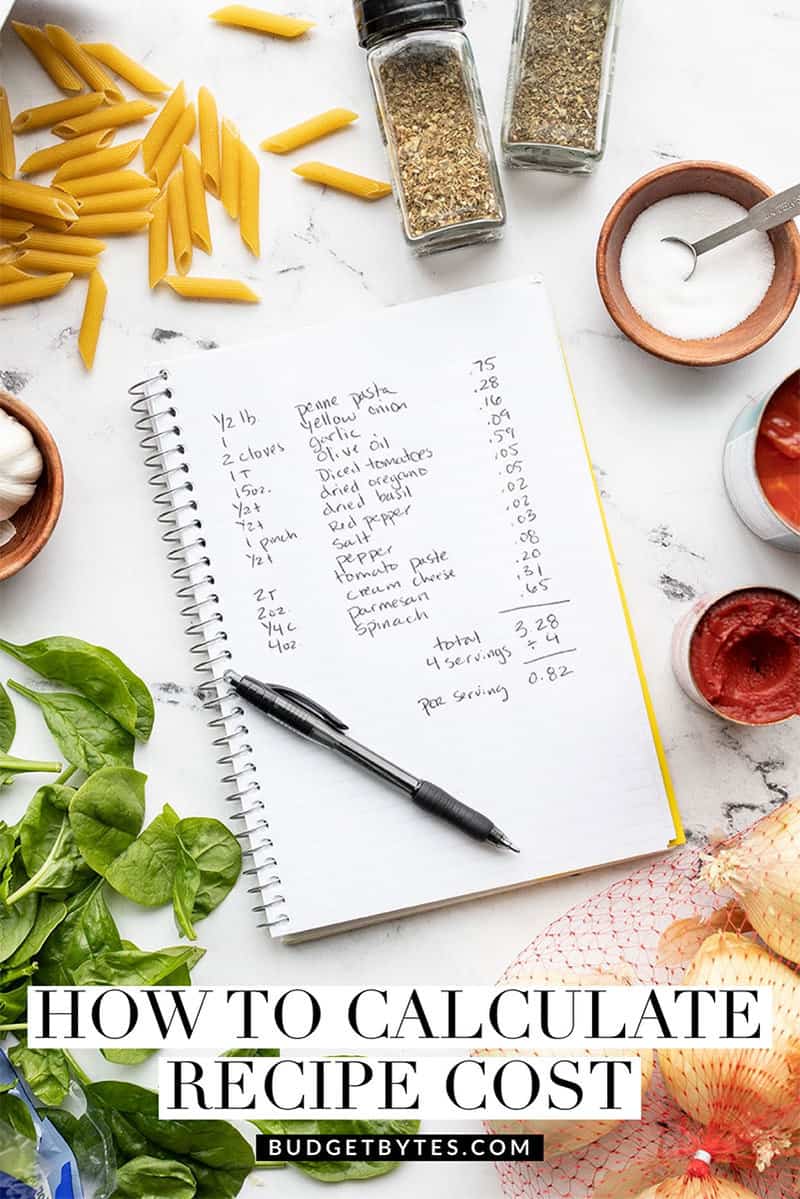

I am using your tips but my recipe says ‘1 green chili’ and I don’t know how that would be classed in UoM
Very helpful information thank you!
Goodday! How to calculate the portion size please.
That’s just something you decide for yourself. :) It’s not a standard calculation.
Maybe a silly question: My recipe includes water. Do you account for that or consider it “free”?? Thanks for the help. Your article has been very helpful.
I round costs to the nearest cent and even if I use several cups of water in a recipe that would cost me less than a cent, so it gets rounded to $0.00. As with all ingredient prices, they can vary quite a bit from person to person. :)
Do I have to add ingredients yielded price, when I cost recipe? Is it important ?
I’m sorry, I don’t understand the question.
What is the formula or the methods for baking to work out the price.
Are you asking how to figure out the cost of the energy used to bake?
Thank you so much. You have made this process simple. I am making some hand and body lotions and trying to figure my costs.
Thank you for your help. I am still a bit confused because there is a lot to take in but I see the more I do it it will get easier. So thank you. Theresa
T
Yes I’m still a lot confuse sometimes it seems easy but when I start doing it I just get confused about it all
In calculating the costs recipe cost, i find the information very heipful and easy to follow.
Thanks so much for the article, I’ll definitely be using your tips. But te me, do you charge for labour also? And how would you go about calculating it? Thanx
If you’re running a commercial foodservice, then yes, you would also want to calculate in labor, utilities, rent, and other overhead costs. For labor, you would just multiply the hourly wage that you pay the employee by the amount of time it takes to prepare the recipe.
HI Im starting my own home bakery making cheese cakes. but my delema is costing out supplies like parchment or cooking spray or the light/energy bill. What you Recommend?
Parchment and cooking spray could be done with the same method as above (estimate how many uses, divide the total product cost by the number of uses, then add that to your total recipe cost). Light and energy would be totally different. You’d need to figure out a way to estimate the monthly cost of those utilities, then divide that by the number of recipes you can produce in a month, and add that to the cost of each recipe.
I was taught how to calculate recipes during culinary school. I am currently working on a catering menu and doing cost cards to determine what to charge, for the life of me, for whatever reason, this one item is causing me a lot of trouble. I am not going to go into much detail, but for my bacon chicken bites, my total ingredient cost was 10.07. With my recipe making 10 servings, that left me with a $1.07 per serving. If I did a 30% desired cost, that just comes out to $3.67.
Long story short, I have no idea how much to charge for my bites?! My recipes yields 30 bites (3 bites/serving). I put my price on my menu based on 10 servings. Can you please help me. Thank you
$10.07 cost x 3 for the markup on the whole pan of 30 meatballs = $30.21 (feed 10 people, 3 meatballs each)
Round up for the number of pans based on final guest count. 1-10 (1 pan) 11-20 (2 pans) etc. Hope this helps.
Wow, not sure where you live, but in canada this much shrimp is upwards of $10. And a handful cilantro is at least $3.
I was thinking the same thing. $.79 for a package of cream cheese? $.69 for mozzarella? Maybe in 1986… (cries in Canadian)
Thank you so much for this, it’s super helpful!
I started doing this WAY back when I first came across your website. I kinda became a geek with calculations of recipes, and I love it. Thank you.